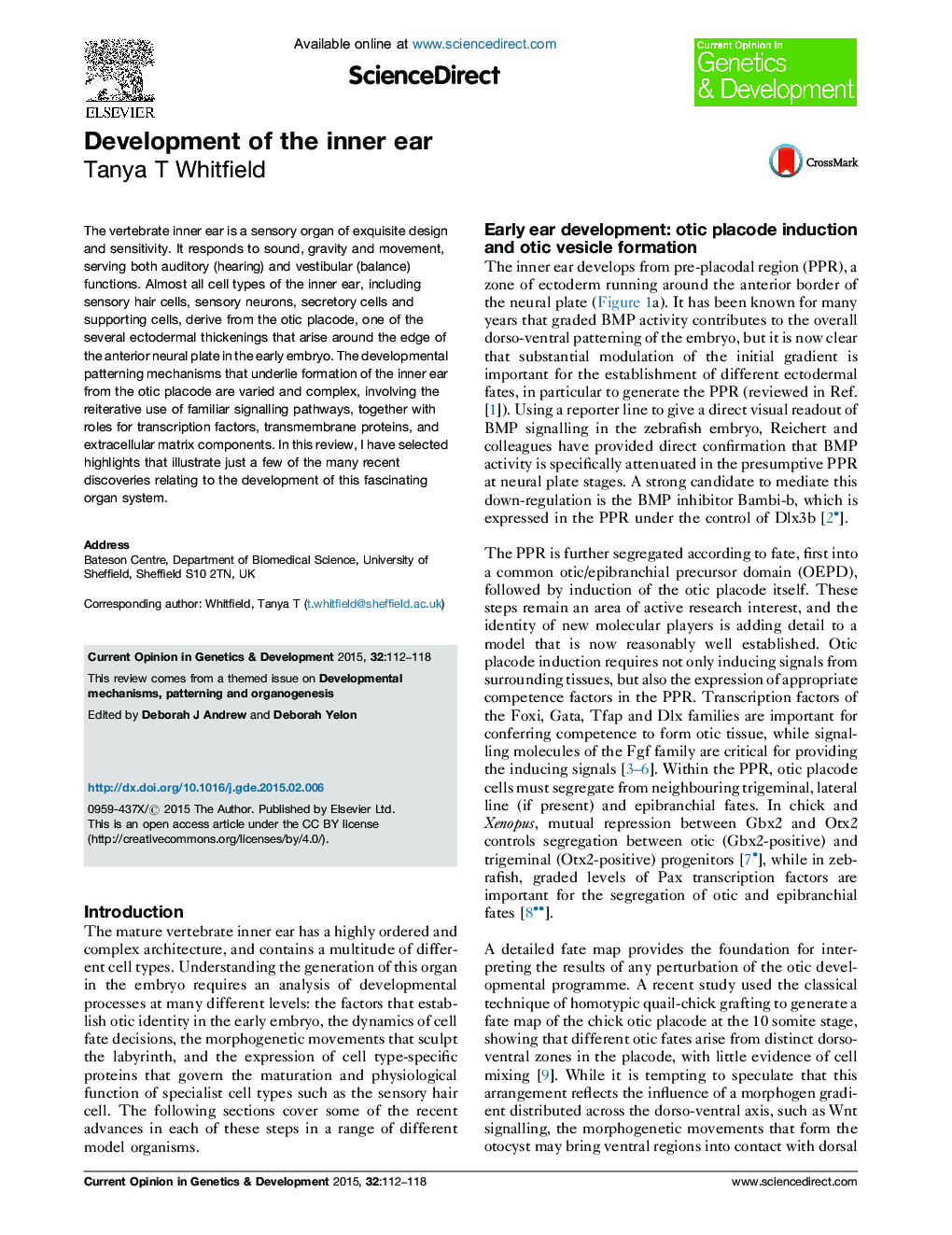| کد مقاله | کد نشریه | سال انتشار | مقاله انگلیسی | نسخه تمام متن |
|---|---|---|---|---|
| 5893129 | 1568247 | 2015 | 7 صفحه PDF | دانلود رایگان |
عنوان انگلیسی مقاله ISI
Development of the inner ear
ترجمه فارسی عنوان
توسعه گوش داخلی
دانلود مقاله + سفارش ترجمه
دانلود مقاله ISI انگلیسی
رایگان برای ایرانیان
ترجمه چکیده
گوش داخلی مهره ها یک عضو حساس طراحی و حساسیت است. آن را به صدا، گرانش و جنبش پاسخ می دهد، که در خدمت هر دو عملکرد شنوایی (شنوایی) و وستیبولار (تعادل) است. تقریبا تمام انواع سلول های گوش داخلی، از جمله سلول های موی حسی، نورون های حسی، سلول های ترشحی و سلول های حمایت کننده، از پلاکت گوسفندها، یکی از چند ضخیم اکتودرمال که در اطراف لبه ورید عصبی قدامی در جنین پیش می آید، حاصل می شود. مکانیسم های الگوریتم تکاملی که در ایجاد گوش داخلی از جفت گدازه وجود دارد، متنوع و پیچیده هستند که شامل استفاده مجدد از مسیرهای آشنا آشنا، همراه با نقش برای عوامل رونویسی، پروتئین های پروتئین غشایی و اجزای ماتریکس خارج سلولی است. در این بررسی، من برجسته ها را انتخاب کرده ام که فقط چند مورد از اکتشافات اخیر در ارتباط با توسعه این سیستم بدن مجلل را نشان می دهد.
موضوعات مرتبط
علوم زیستی و بیوفناوری
بیوشیمی، ژنتیک و زیست شناسی مولکولی
زیست شناسی تکاملی
چکیده انگلیسی
The vertebrate inner ear is a sensory organ of exquisite design and sensitivity. It responds to sound, gravity and movement, serving both auditory (hearing) and vestibular (balance) functions. Almost all cell types of the inner ear, including sensory hair cells, sensory neurons, secretory cells and supporting cells, derive from the otic placode, one of the several ectodermal thickenings that arise around the edge of the anterior neural plate in the early embryo. The developmental patterning mechanisms that underlie formation of the inner ear from the otic placode are varied and complex, involving the reiterative use of familiar signalling pathways, together with roles for transcription factors, transmembrane proteins, and extracellular matrix components. In this review, I have selected highlights that illustrate just a few of the many recent discoveries relating to the development of this fascinating organ system.
ناشر
Database: Elsevier - ScienceDirect (ساینس دایرکت)
Journal: Current Opinion in Genetics & Development - Volume 32, June 2015, Pages 112-118
Journal: Current Opinion in Genetics & Development - Volume 32, June 2015, Pages 112-118
نویسندگان
Tanya T Whitfield,
